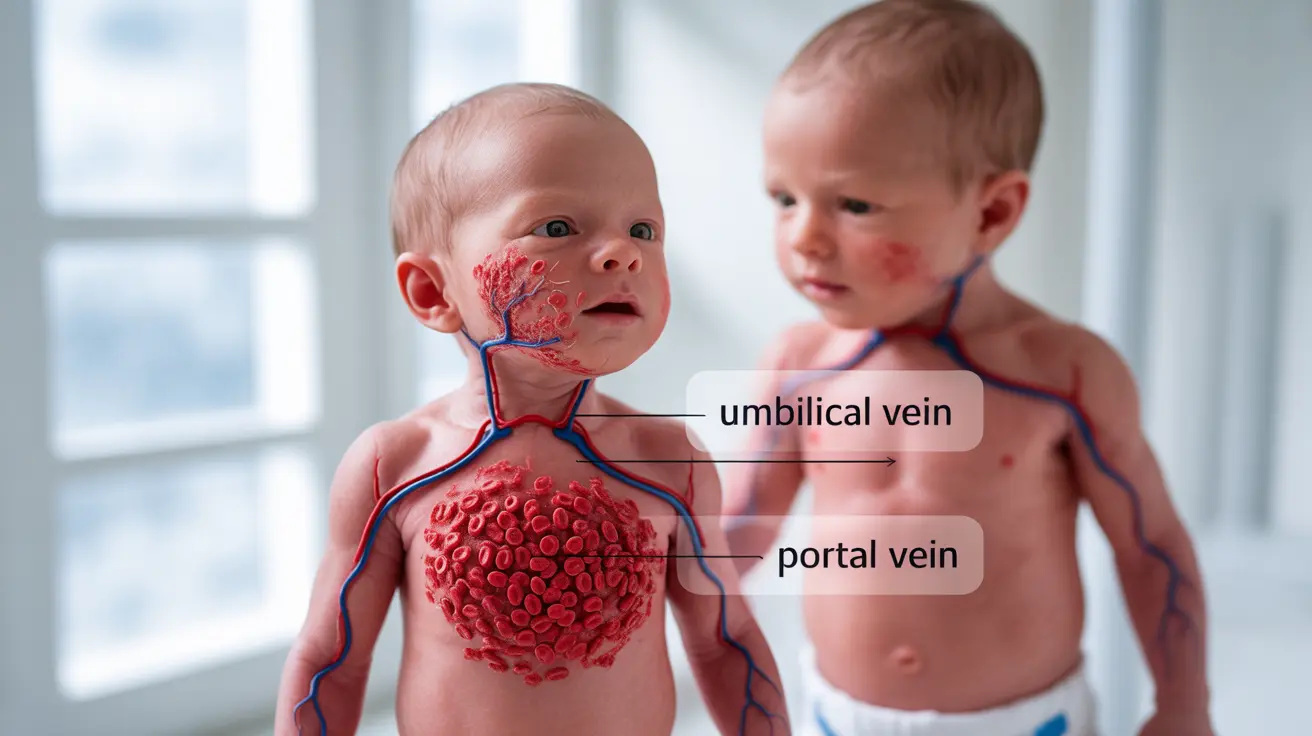Polycythemia in newborns is a blood condition characterized by an abnormally high concentration of red blood cells in a baby's circulation. This condition affects approximately 1-5% of all newborns and requires careful medical attention to prevent potential complications. Understanding the signs, symptoms, and available treatments is crucial for parents and healthcare providers alike.
Early detection and proper management of polycythemia are essential for ensuring the best possible outcomes for affected newborns. This comprehensive guide will explore the key aspects of this condition, from recognition to treatment options.
Understanding Polycythemia in Newborns
Polycythemia occurs when a newborn's hematocrit (the percentage of red blood cells in total blood volume) exceeds 65%. This increased blood thickness can affect blood flow throughout the body and potentially lead to various complications if left untreated.
Signs and Symptoms to Watch For
Parents and healthcare providers should be alert to the following signs and symptoms of polycythemia in newborns:
- Ruddy or plethoric (bluish-red) appearance
- Poor feeding or reduced appetite
- Breathing difficulties
- Lethargy or decreased activity
- Jitteriness or tremors
- Jaundice (yellowing of the skin)
- Poor muscle tone
- Rapid breathing (tachypnea)
Risk Factors and Causes
Several factors can increase a newborn's risk of developing polycythemia:
Maternal Factors
- Diabetes during pregnancy
- High blood pressure
- Living at high altitudes
- Smoking during pregnancy
Infant-Related Factors
- Small for gestational age
- Twin-to-twin transfusion syndrome
- Delayed cord clamping
- Post-term delivery
Diagnosis Process
Healthcare providers diagnose polycythemia through various methods:
Initial Assessment
- Physical examination
- Evaluation of visible symptoms
- Review of maternal and birth history
Laboratory Testing
- Complete blood count (CBC)
- Hematocrit measurement
- Blood glucose levels
- Additional blood tests as needed
Treatment Approaches
Treatment for polycythemia in newborns depends on several factors, including symptom severity and underlying causes. Common treatment options include:
Conservative Management
- Close monitoring
- Adequate hydration
- Temperature regulation
- Feeding support
Partial Exchange Transfusion
In more severe cases, partial exchange transfusion may be necessary to reduce the concentration of red blood cells and improve blood flow.
Prevention and Monitoring
While not all cases of polycythemia can be prevented, certain measures can help reduce risk:
- Regular prenatal care
- Management of maternal conditions
- Appropriate timing of cord clamping
- Careful monitoring of at-risk infants
Frequently Asked Questions
- What are the common signs and symptoms of polycythemia in newborns?
Common signs include a ruddy appearance, poor feeding, breathing difficulties, lethargy, jitteriness, jaundice, and poor muscle tone. These symptoms occur due to increased blood thickness affecting circulation.
- What causes polycythemia in newborn babies and which infants are at higher risk?
Polycythemia can be caused by maternal conditions (diabetes, hypertension), delayed cord clamping, and twin-to-twin transfusion syndrome. Infants who are small for gestational age, born at high altitudes, or born post-term are at higher risk.
- How is polycythemia in newborns diagnosed and what tests are used?
Diagnosis involves physical examination and laboratory tests, primarily measuring hematocrit levels through blood samples. A complete blood count and other blood tests may be performed to assess the condition's severity.
- What treatments are available for newborns diagnosed with polycythemia?
Treatment options range from conservative management (monitoring and hydration) to partial exchange transfusion in severe cases. The choice of treatment depends on symptom severity and underlying causes.
- What complications can arise if polycythemia in newborns is left untreated?
Untreated polycythemia can lead to serious complications including organ dysfunction, blood clots, feeding difficulties, respiratory problems, and potential neurological issues. Early detection and treatment are crucial for preventing these complications.




